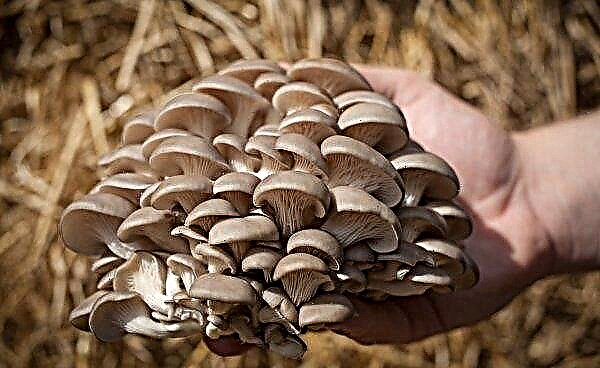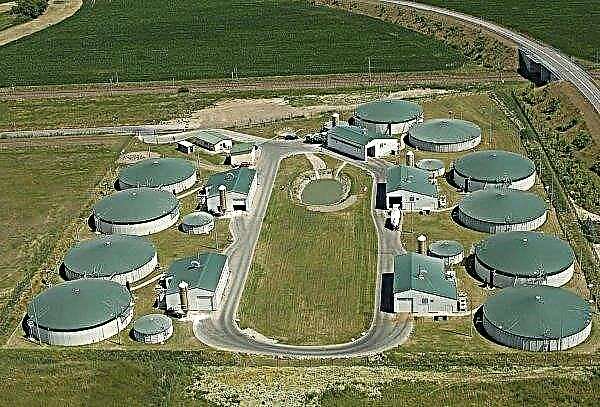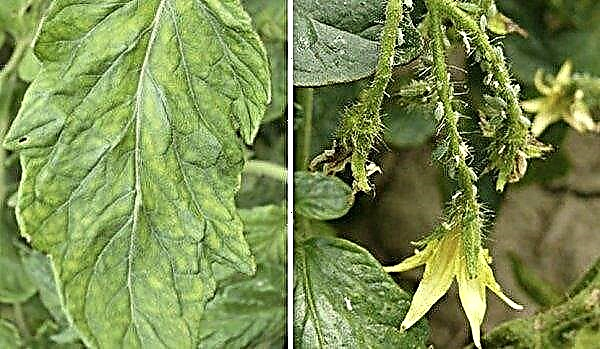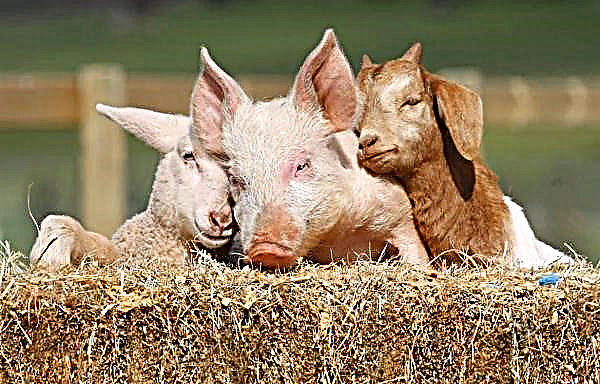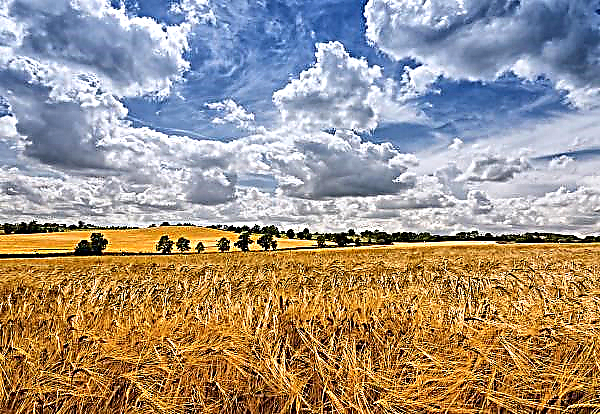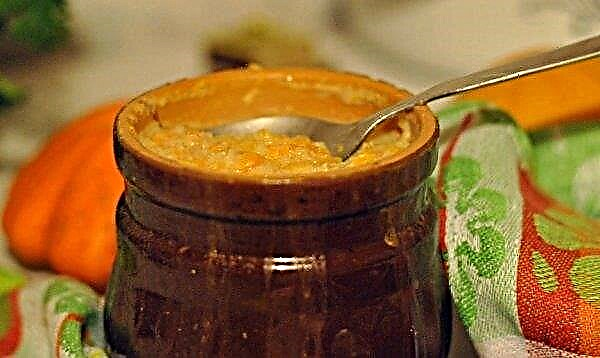Many novice farmers make mistakes when growing peppers in a greenhouse, which can cause the plant to blacken. But not only poor care or lack of familiarity with how to properly grow peppers can cause blackening of leaves. You can learn about other causes and methods for solving the problem from the article.
The fruits of pepper on the bush turn black: reasons for what to do
Factors due to which the fruits and leaves of pepper blacken can be divided into several main groups.
Mistakes in leaving
Improper care of the plant at different periods of its development, as well as during fruit ripening, contributes to the development of various diseases of the root system, which subsequently affects the fruits.
Non-compliance with the irrigation regime
When growing pepper, proper, moderate watering is very important. Lack of or excess moisture adversely affects the plant. If the topsoil dries up, or if watering is carried out with cold water, the ovaries and inflorescences will begin to fall.  To avoid this problem, it is necessary to observe the watering regime: it must be carried out once a week, taking into account the drying of 2 cm of the topsoil. Watering is carried out with warm water in the morning or in the evening.
To avoid this problem, it is necessary to observe the watering regime: it must be carried out once a week, taking into account the drying of 2 cm of the topsoil. Watering is carried out with warm water in the morning or in the evening.
Calcium deficiency
Calcium is needed to form the skeleton of a plant; it strengthens the cell walls and binds cells to each other. The lack of this element has a bad effect on pepper: chlorosis and necrotic spots appear, as well as rot on the fruits.
To prevent this problem, it is necessary to introduce calcium nitrate into the soil once during the period of active growth. Calcium is also found in superphosphate, but in a lower dose (less accessible form for plants).
Heat
Another reason that blackens peppers in the garden is the non-compliance with the temperature regime of plant growth. If you do not adhere to the temperature regime, the bush will grow slowly.

At elevated temperatures, the soil will begin to dry out, which will lead to a lack of moisture, as a result of which the leaves and roots of pepper will dry out. To avoid this problem, it is necessary to monitor the temperature at which this crop is grown and follow the watering technique.
Important! The temperature before emergence should be +25 ... + 28 ° С; as soon as the shoots appear, for 2 days the temperature drops to + 20 ° С, then it keeps at the level of +22 ... + 25 ° С.
Cold exposure
Not only high temperature negatively affects peppers, but also low. Frosts and cooling slow down and stop growth, as a result of which the bushes stop blooming and no ovaries form, and the leaves of the pepper turn black. This problem can occur not only due to low air temperature, but also when watering with cold water or lack of light.
Disease exposure
There are diseases that can harm the future crop. To prevent this, you need to know how they look and how to deal with them.
Did you know? Pepper contains hormones of happiness endorphins, which is also found in chocolate. Thus, the use of this vegetable allows you to get rid of depression.
Vertex rot
Vertex rot is a physiological disease that occurs due to a lack of calcium or an excess amount of nitrogen. The main sign of the appearance of this disease is dark green, and eventually brown, wet spots that are located on top of the fruits. Most often, this disease affects plants with an imbalanced balance of minerals. To prevent this disease, add fertilizer containing calcium.
White rot
White rot refers to fungal diseases and affects the stem closer to the root. First, a white fungal coating appears on it, after which black seals are formed inside the stem, poisoning the entire plant. The formation of white rot contributes to increased humidity and a temperature of + 15 ° C, which is excessively low for pepper. To prevent the occurrence of this disease, it is necessary to water the plant with warm water and arrange good ventilation in the greenhouse.

Alternariosis
Dry rot or alternariosis is a fungal disease. It affects the leaves of pepper: dark brown spots appear on them, and on the fruits - wet spots, covered with fluff after the rain, which eventually turns into a dark coating. Dry rot develops during sudden changes in temperature, as well as in dry weather. To prevent its occurrence, it is necessary to monitor the temperature and humidity in the greenhouse.

Sclerotinia
The optimal conditions for this disease is a temperature below +18 ... + 20 ° C with increased humidity of 85%. Sclerotinia affects the basal part of the stem, covering it with a white coating, under which black formations are hidden. This disease affects not only the bush, but also the fruits - they become soft and with the same plaque as on the stem.

Copper preparations help well from sclerotinia: fungicides “Ordan”, “Khom”, “Oksikhom”, “Profit Gold”, “Acrobat MC”, “Previkur”, or 1% Bordeaux liquid.
Late blight
Late blight (the better known name for this disease is late blight), affects both bushes and fruits. First, the leaves begin to blacken, gradually turning to the root and the fruits, they become soft with black spots. This disease is treated with the same fungicides as in the case of sclerotiniosis.

Fusarium wilt
Fusarium affects the blood vessels of the stem, causing them to become clogged, which causes malnutrition of the plant, as a result of which the plant is poisoned by toxins. In this case, castings curl, turn yellow, resistant varieties can enter the fruiting stage, and susceptible ones die within half a month from the moment of bud formation. This disease is not treated. Affected bushes must be collected and burned.

Pest attack
In addition to diseases associated with the growth and development of pepper, pests can also affect the bush.
Aphid
The most common pest, not only for pepper, but also for other crops, is aphid. She lives on leaves and inflorescences, the basis of her nutrition is the juice from the plant. Aphid is a pest that reproduces especially fruitfully in greenhouse conditions .; in open soil, it multiplies only in wet weather and elevated temperature. In case of untimely detection of this pest, the bush may die.

If you notice aphids on pepper, you need to spray the bush with a solution of wood ash: for 10 liters of boiling water you need 500 g of ash, mix and insist for a day, pass through a sieve and add 1 tbsp. l liquid soap. Processing with this substance is done once every 4 days. In extreme cases, you can use chemicals, but you must follow the instructions and use the drugs until the fruit sets. Processing during the fruiting period cannot be performed.
Did you know? The kind of pepper that we used to call Bulgarian is called “sweet” in Bulgaria itself, and “paprika” in Europe.
Whiteflies
Whitefly is externally a small white butterfly. The main sign of the appearance of the pest is the presence of eggs and larvae on the wrong side of the leaf. Whitefly and its larvae eat pepper leaves.  If you find a whitefly on the bushes in a small amount, wash the leaves with clean water; if there are many insects, more serious measures must be taken. To do this, spray the bush with Inta-Vir, 1 tablet of which must be dissolved in 10 liters of water.
If you find a whitefly on the bushes in a small amount, wash the leaves with clean water; if there are many insects, more serious measures must be taken. To do this, spray the bush with Inta-Vir, 1 tablet of which must be dissolved in 10 liters of water.
Garden scoops
A garden scoop is a butterfly that leads a nocturnal lifestyle. Her larvae cause great damage to the plant, as they feed on its leaves, nibbling them on the sides; adult individuals eat the entire leaf and gradually switch to the fruits, devouring their flesh. Biopreparations such as bitoxibacillin (50 g per 10 l of water) or chemical insecticides such as Decis (2 ml per 10 l of water) are effective against this pest. Deep loosening of the soil is also necessary, especially in the fall, to destroy pupae and caterpillars.

Prevention
Prevention of pests and diseases includes the following precautions:
- monitor the temperature and humidity in the greenhouse;
- fertilize plants in a timely manner;
- equip a greenhouse with good ventilation;
- timely process the bushes when revealing diseases or pests;
- crop rotation;
- remove diseased bushes;
- Follow the technology of growing pepper.
Important! Preventive measures are not able to completely protect peppers from the appearance of diseases and pests, so you need to regularly inspect plants and respond promptly to changes in the appearance of the bush and fruits.
Knowing the reasons why the fruits and bushes of pepper begin to blacken, you can prevent them and even fight them, which will help you save your harvest.

